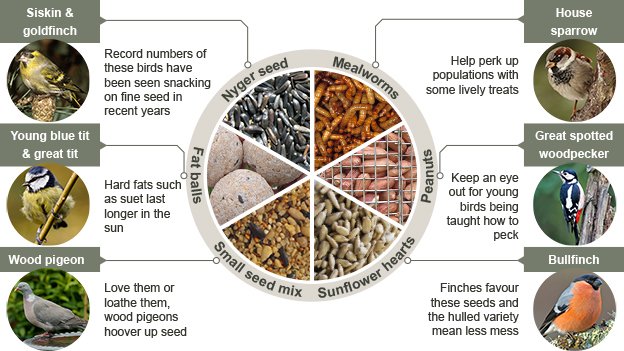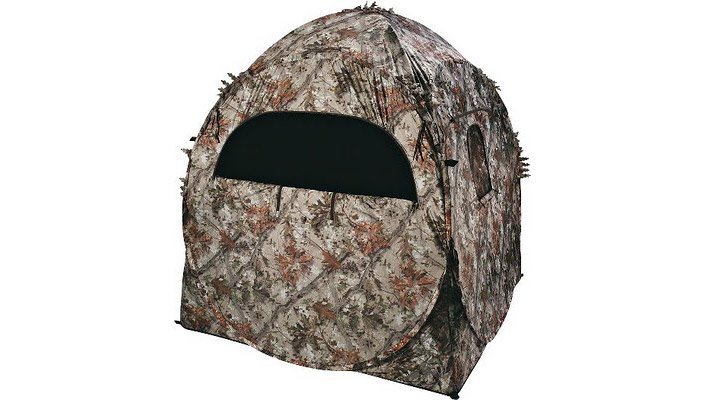After all this activity from searching high and low for all kinds of critters, it's time to sit back and let nature come to you. It's not necessary to be an expert in the field, but being a naturalist, this is the way you will learn some other things - by observation.

Birds are numerous and all around us, in town and country alike, an they are among the easiest and most rewarding creatures to watch. You can be a "twitcher", content simply to identify and list all the birds you have seen, or you can be a naturalist and try to discover just how the different species fit into the jigsaw of animal and plant life. Here are some ideas for the beginner, but remember the golden rule: the birds come first. Never harm of disturb them!
Watching birds

How to begin:
To start you need nothing more than keen eyes and patience. Get to know the birds in your garden or street first. Then try the local park, a lake or river back and finally open country. Remember, the birds will be watching you, so be quiet and stealthy, wear dull clothing, and try to blend with the scenery. The best time to look for birds is soon after dawn or just before dusk. To get a closer view, binoculars are a "must".
You will be surprised just how quickly you can become familiar with the common birds. How many can you name already? If you see one that you don't know, use a field guide to help you identify it and record each bird you see in a notebook. Note its color, size, shape, and any special features or behavior. Note where you saw the bird, and what it was doing at the time. A pocket tape recorder is useful for taking field notes as it allows you to record without losing sight of the bird. Modern technology has also made it easier to capture photographs. By recording a video on your cellphone, you will be able to watch its activity over and over again.
What do birds do all day?
Here are some of the things a birdwatcher looks out for:

- the nest
- the time of day the birds are active
- the shape of its wings and the way it flies
- the way it acts when it's with other birds
Looking at bird behavior and discovering more about the way they live will give hours of enjoyment.
Patterns of activity:
Does the early bird catch the worm? Which birds are early risers - and do you know why? When do they stop to rest, and where do they roost? Try making a timetable for an owl or starling.

Courtship and aggression:
Watch a male pigeon strutting and bowing in front of his chosen mate. How does she react? Look out for other courtship rituals, especially in spring, and note how birds fight over territory at this tie of year. Watch for battles over food, especially when it's scarce due to hard weather. Who wins the squabbles at your birdtable?
Nesting:
In spring, look for birds carrying twigs and grasses. They will be preparing their nests. See if you can follow the bird to its nest site, but don't go too close. Leave at once if the bird becomes agitated. Keep a note of when the first young appear. Look for swallows and martins under the eaves.
Movement:
What style of flight does your bird have? What shape are its wings? How does your bird take off?

Care for the young:
Watch for birds carrying worms or insects; they will be feeding their brood. Listen for young birds cheeping for food from the nest and, if possible, watch the parent feeding them. Look for the many ways in which adult birds protect their young.
Do all birds eat the same thing???
Obviously not. If they did, there would be far too much competition for too little food.

The different types of bill give a very good clue to the kinds of food different birds eat. Even common garden birds have preferences. Fix five or six shallow dishes to a plank, and put different food in each (worms, fat, seeds, cheese, bread). Keep a note of who eats what. Experiment with other foods too.
Watch for migrants:
Have you noticed that as the weather gets colder, some birds disappear while new ones arrive? Swallows are a good example. They, like many other species, migrate each year - spending the northern winter months in warmer countries far to the south. Keep a careful record of changes in your local bird population, especially in spring and autumn.
Getting close - using hides
Careful stalking will often get you quite close to birds, but using a hide will bring more success.

Resource:

I like it your sharing...
Thanks for your sharing...
Success is always for you...
beautiful ,, the beauty of it is important in the life of ,, follow @akhyasad
a very useful science. doing such a thing would need special skills
your story very nice of birds.this time i read your story and i am to know that,alot of thing new of birds.i like your story.your thought really good of nature bird.thank u very much for your good post sharing.. @bdmomuae
Very classy
you know what they say, nature is humans best friend- do you agree?
I really like your post. it's very interesting.
thanks for shear it to give information on us.
Happy Steeming.
WOW Beautiful post.. Thanks for sharing with us!
I am new to Steemit and just found your posts. I found them through @steemiteducation. I've been enjoying going through your nature series. When I was younger I spent a great deal of my time outside exploring in the woods and brush. Looking for snakes and critters. If we weren't doing that we were at the pond behind the house waist deep looking for waterlife. Oh, how my mom hated when I showed up at home with a big bucket of frog eggs and tadpoles. When teaching younger grades I have tried to foster some of that same love of being outside and exploring. I have taken my classes on many field trips to the outdoor education center near us and its always been a wonderful experience catching butterflies and looking at bugs. My own kids are just like me, although that changes a little as they get older. Thanks for sharing, I'm looking forward to more.